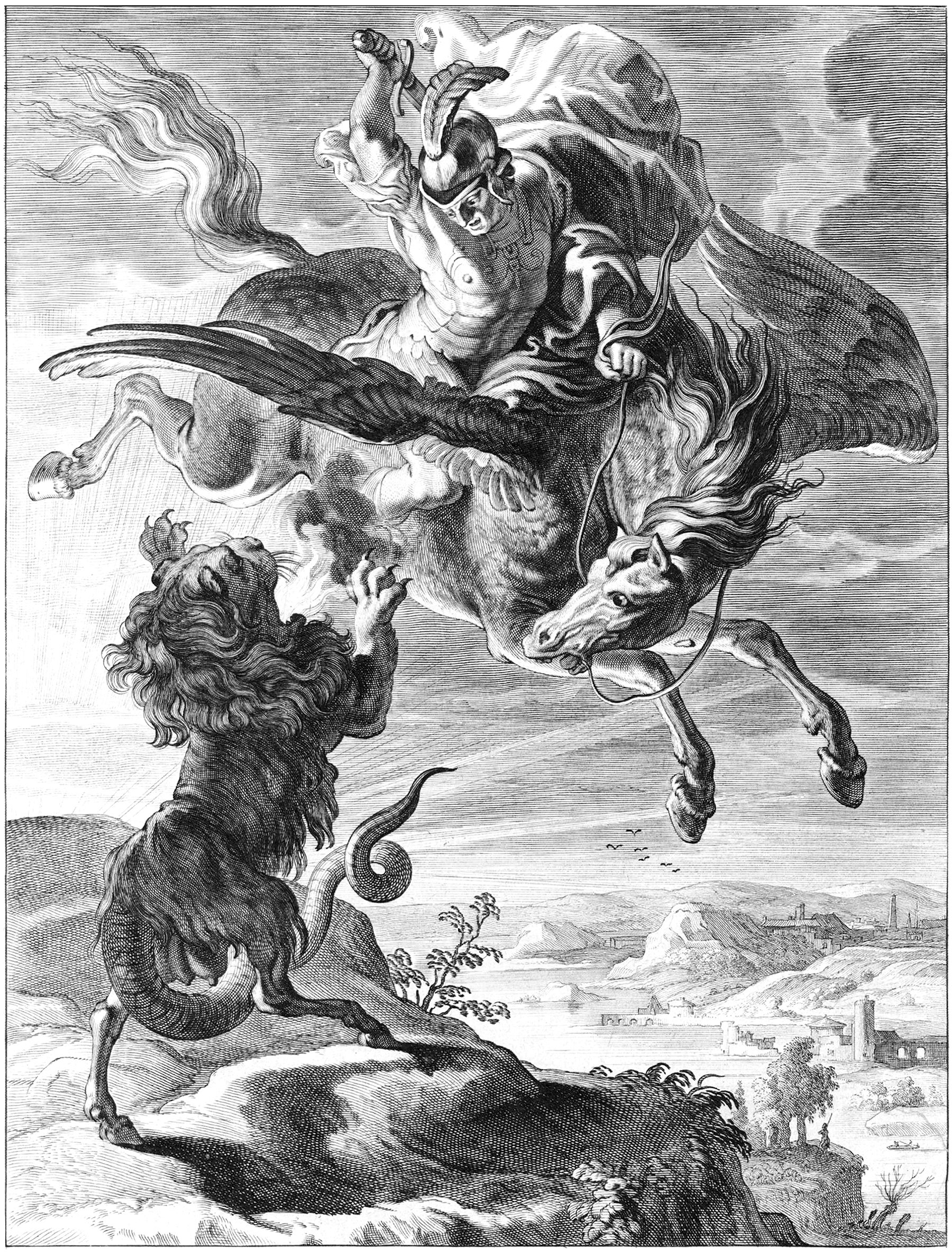The Myth of Pegasus and Bellerophon
Illustration from 1655 showing Bellerophon and Pegasus fighting the Chimera. Drawn by Nicolas Langlois.
Pictured above is a scene from ancient Greek mythology, showing the hero Bellerophon fighting the monstrous Chimera, with help from his winged-horse Pegasus. It serves as a dramatic climax in the story of the hero and his winged companion, and it’s one of many examples showing the power of verticality within ancient Greek mythology. As with most myths of this nature, multiple versions of the story exist, but the most common version follows.
The story begins when the Lycian king Iobates sends the hero Bellerophon to kill the Chimera, a mythical beast with the head of a lion, the body of a goat, and the tail of a serpent. On his way to find the Chimera, Bellerophon meets a seer who tells him he’ll need the winged-horse Pegasus on his journey. The seer instructs him to sleep in the temple of Athena, and Bellerophon abides. Athena visits Bellerophon in a dream and gifts him a golden bridle. Bellerophon awakens and uses this bridle to capture Pegasus, and they both fly off to find the Chimera.
Bellerophon finds the Chimera and a battle ensues. The hero is unable to approach the monster because it breathes fire, so he attaches a block of lead to the tip of his spear and uses it as a shield. He charges at the Chimera and jams the lead block down the beast’s throat. The Chimera’s breath melts the lead and it suffocates to death. After the battle, Bellerophon and Pegasus return to King Iobates, who doesn’t believe the tale. He proceeds to send the pair on a series of other quests, each of which they return from victorious.
Throughout the series of quests, Bellerophon grows more and more arrogant. At the height of said arrogance, he decides to ride Pegasus to the top of Mount Olympus, the home of the gods. This angers Zeus, who knocks Bellerophon off Pegasus and back down to earth. Pegasus completes the flight to Mount Olympus, and Zeus eventually uses the winged-horse to carry his thunderbolts.
Painting by Giovanni Battista Tiepolo showing Bellerophon and Pegasus fighting the Chimera.
It’s an epic tale full of references to verticality. The first reference is Pegasus himself, who demonstrates the power of flight. The seer tells Bellerophon that he will need Pegasus to defeat the Chimera, because Pegasus can fly. With the power of flight, Bellerophon is able to slay multiple monsters throughout his quests. The second reference is Bellerophon’s flight to Mount Olympus. This story is similar to the Greek myth of Icarus, who flew too close to the sun and fell to his death. Bellerophon erroneously believed he could achieve verticality and fly up to the gods, and he paid for it with his life. This need to escape the earth’s surface is present in all of us, which is why these stories resonate so deeply with us.
Check out other myths and legends that deal with flight here.


